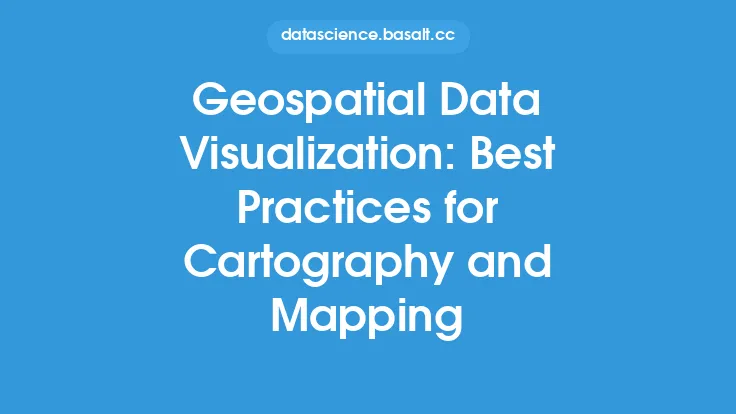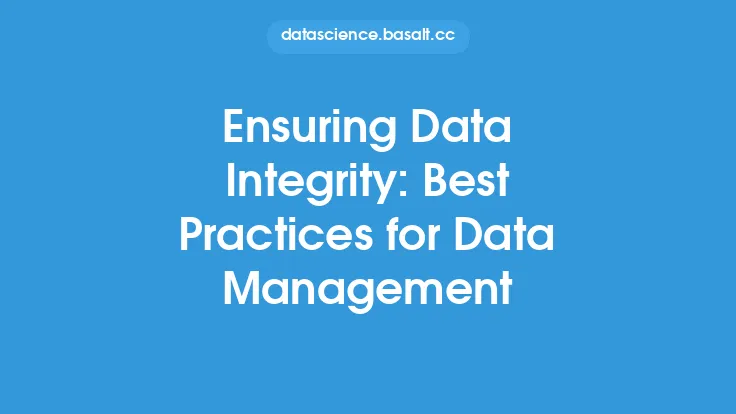Maintaining data consistency across multiple systems is a critical aspect of data quality that ensures the accuracy, reliability, and trustworthiness of data-driven insights. As organizations continue to rely on data to inform their decisions, the importance of data consistency cannot be overstated. In this article, we will delve into the best practices for maintaining data consistency across multiple systems, exploring the technical and procedural aspects that underpin this crucial aspect of data quality.
Introduction to Data Consistency
Data consistency refers to the degree to which data values are consistent with the rules, constraints, and semantics defined for the data. In other words, data consistency ensures that data values are accurate, complete, and conform to the expected format and rules. Maintaining data consistency is essential in today's data-driven world, where organizations rely on data to inform their decisions, drive business outcomes, and gain a competitive edge. Data inconsistency, on the other hand, can lead to incorrect insights, poor decision-making, and ultimately, negative business outcomes.
Data Standardization and Normalization
Data standardization and normalization are two critical processes that underpin data consistency. Data standardization involves establishing a common format and set of rules for data values, ensuring that data is consistent across different systems and applications. Data normalization, on the other hand, involves transforming data into a standardized format that eliminates data redundancy and improves data integrity. By standardizing and normalizing data, organizations can ensure that data values are consistent, accurate, and reliable, regardless of the system or application used to store or process the data.
Data Validation and Verification
Data validation and verification are essential processes that ensure data consistency by checking data values against predefined rules and constraints. Data validation involves checking data values at the point of entry, ensuring that data conforms to the expected format and rules. Data verification, on the other hand, involves checking data values against external sources, such as reference data or master data, to ensure that data is accurate and up-to-date. By validating and verifying data, organizations can detect and correct data inconsistencies, ensuring that data is reliable and trustworthy.
Data Integration and Interoperability
Data integration and interoperability are critical aspects of maintaining data consistency across multiple systems. Data integration involves combining data from different sources, ensuring that data is consistent and accurate across different systems and applications. Data interoperability, on the other hand, involves enabling different systems and applications to communicate and exchange data seamlessly, ensuring that data is consistent and accurate across different platforms. By integrating and interoperating data, organizations can ensure that data is consistent, accurate, and reliable, regardless of the system or application used to store or process the data.
Data Governance and Quality Control
Data governance and quality control are essential aspects of maintaining data consistency across multiple systems. Data governance involves establishing policies, procedures, and standards for data management, ensuring that data is consistent, accurate, and reliable. Quality control, on the other hand, involves monitoring and controlling data quality, detecting and correcting data inconsistencies, and ensuring that data meets the required standards. By establishing a robust data governance framework and implementing quality control processes, organizations can ensure that data is consistent, accurate, and reliable, and that data inconsistencies are detected and corrected promptly.
Technical Implementations
From a technical perspective, maintaining data consistency across multiple systems requires a range of implementations, including data warehousing, data lakes, and data virtualization. Data warehousing involves storing data in a centralized repository, ensuring that data is consistent and accurate across different systems and applications. Data lakes, on the other hand, involve storing raw, unprocessed data in a centralized repository, enabling organizations to process and analyze data in a flexible and scalable manner. Data virtualization, meanwhile, involves creating a virtual layer of data, enabling organizations to access and integrate data from different sources, without having to physically move or replicate the data. By implementing these technical solutions, organizations can ensure that data is consistent, accurate, and reliable, and that data inconsistencies are detected and corrected promptly.
Best Practices for Maintaining Data Consistency
To maintain data consistency across multiple systems, organizations should follow a range of best practices, including establishing a robust data governance framework, implementing data standardization and normalization, validating and verifying data, integrating and interoperating data, and monitoring and controlling data quality. Additionally, organizations should establish clear policies and procedures for data management, ensure that data is properly documented and metadata is accurate, and provide training and awareness programs for employees to ensure that they understand the importance of data consistency and how to maintain it. By following these best practices, organizations can ensure that data is consistent, accurate, and reliable, and that data inconsistencies are detected and corrected promptly.
Conclusion
Maintaining data consistency across multiple systems is a critical aspect of data quality that ensures the accuracy, reliability, and trustworthiness of data-driven insights. By following the best practices outlined in this article, organizations can ensure that data is consistent, accurate, and reliable, and that data inconsistencies are detected and corrected promptly. Whether through data standardization and normalization, data validation and verification, data integration and interoperability, or technical implementations such as data warehousing and data virtualization, maintaining data consistency requires a range of technical and procedural aspects that underpin this crucial aspect of data quality. By prioritizing data consistency, organizations can ensure that their data-driven insights are trustworthy, reliable, and accurate, and that they can make informed decisions that drive business outcomes and gain a competitive edge.





